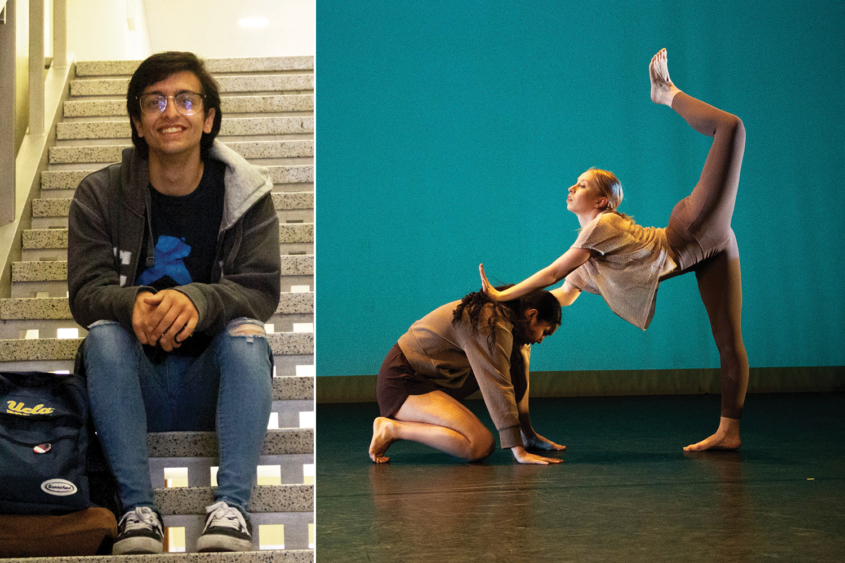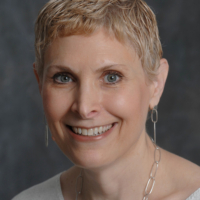Doubling Down at UCLA Luskin undergrads are bringing a public service ethos to second majors, including from the arts and sciences
By Mary Braswell
Think deeply. Analyze facts. Find solutions.
These skills form the core of the UCLA Luskin undergraduate program, preparing students for leadership roles in any field.
But some public affairs students choose to pursue a second option among UCLA’s more than 125 undergraduate majors, perhaps to bring a civic service ethos to a specific career path or simply to pursue two passions.
Economics, education, sociology and political science are commonly paired with the B.A. in Public Affairs, said Erika Villanueva, director of undergraduate student services. Lately, however, more students from the sciences and arts are finding a home at the Luskin School.
Zerxes Bhadha, who is also majoring in astrophysics, and Lilah Haye, who is also majoring in dance, shared how their discovery of the public affairs program shifted their approach to a UCLA education.
IN THE BEGINNING
UCLA Luskin launched undergraduate classwork in the fall of 2018, just as Bhadha and Haye were beginning their freshman year.
Bhadha had planned to study biochemistry but was having second thoughts. “My gut was telling me there’s no real rush to pick a major right now, it’ll work itself out. I’ll figure it out as we go along,” Bhadha recalled.
That plan was upended after a conversation with a teaching assistant at a UCLA summer program for incoming students. The TA, who happened to be an urban planning doctoral student, suggested that Bhadha check out the new undergrad program at Luskin.
“I was totally hooked,” said Bhadha, who uses they/them pronouns. “I realized, this is where I want to be, this is what I want to do. And the next day, I signed up for the pre-major.”
But Bhadha still felt the pull of the sciences.
“One of my earliest memories is my dad taking out this small telescope that we had and showing me the craters on the moon. And you know, since then I’ve been looking at stars, and we’d go out and look for meteor showers, and I’d read everything I could about space and physics,” they said. “It’s definitely something that I really enjoy and so that’s how I settled on this second major.”
For Haye, majoring in dance at UCLA immerses her in the art that she loves.
“I’ve been a competitive dancer my whole life. I started dancing at 5 and I haven’t stopped since,” she said. Contemporary dance is her forte, but as part of the World Arts and Cultures program, she has also studied the dance traditions of places like India, Brazil and West Africa.
The public affairs major is preparing Haye for another dream: a career in law or politics.
“Before school even started I had heard about the brand-new public affairs major, and I knew from the beginning that I wanted to double major,” she said. Learning about the senior capstone project, which immerses students in a year-long research project with a community partner, sealed the deal.
“At the end of the day, the capstone gives you real-world experience in comparison to just taking more upper-division classes,” Haye said. “That’s what really drew me to public affairs.”
BEST OF BOTH WORLDS
Bhadha has found that the physical sciences and social sciences look at the world from different vantage points.
“My science training tells me that every problem has a solution … whereas in many of my public affairs courses, we’re looking at individuals and at systems and at things for which there isn’t necessarily one correct answer, there are just guidelines and principles that we follow to make the world better,” they said.
There is little overlap between the two majors, though the advanced math needed for astrophysics has made the public affairs degree’s statistics, coding and quantitative analysis requirements easier to manage.
While the two fields open doors to a multitude of professions, “it really comes down to how I want to spend my time and where I want my career to be, and that is in public service,” said Bhadha, who’s looking forward to working with the Maryland public defender’s office for their capstone project.
Haye’s chosen majors, as well as her minor in African American studies, allow for quite a bit of crossover. Many people don’t realize that the dance major requires intensive research and writing, she said, such as the 20-page paper she produced on the racialization of dancing bodies, from blackface minstrelsy to modern dance.
Haye was able to satisfy public affairs elective requirements with World Arts and Cultures courses such as “Art as Social Action.” Her capstone internship is with the office of California Assemblywoman Lorena Gonzalez, who has lobbied for fair wages for dancers. And Haye seeks out every opportunity to introduce the arts into her public affairs assignments.
“One of the main things we learn in the dance major is how to use dance as activism, and the public affairs department is all about activism. They’re so intertwined.”
AN INTERDISCIPLINARY LENS
Coupling fine arts or hard sciences with public affairs “makes absolute sense,” said Villanueva, who advises public affairs majors on their educational journeys at and beyond UCLA.
At UCLA, the arts embrace equity and community engagement, she said, and the sciences are viewed through an interdisciplinary lens that captures the importance of social responsibility.
But the decision to double major should not be taken lightly, Villanueva stressed.
“It does take careful planning, and it really comes down to a student’s energy level,” she said. “It becomes a more holistic conversation about what they will gain from double majoring or minoring, other than saying I have an extra line on my diploma.”
Bhadha’s course load is challenging but also provides structure and incentive. “I’ve always taken the view that I would be taking all of these classes anyway,” they said.
In addition to dance and public affairs, Haye was drawn to UCLA’s African American studies curriculum to learn more about her father’s heritage.
“I love public affairs, I love dance, and African American studies is my actual racial identity,” she said. “My three forms of study really define me.”










Leave a Reply
Want to join the discussion?Feel free to contribute!